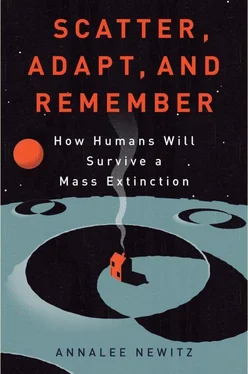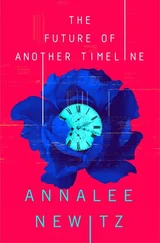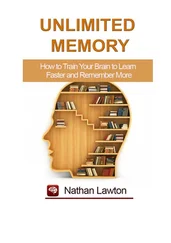3. 2.5 million years ago: N. D. Pyenson and D. R. Lindberg, “What Happened to Gray Whales during the Pleistocene? The Ecological Impact of Sea-Level Change on Benthic Feeding Areas in the North Pacific Ocean,” PLoS ONE 6 (2011): e21295.
4. Harvey, now a professor at Moss Landing Marine Laboratories: Personal interview, February 2, 2012. All subsequent quotes from Harvey are from this interview.
5. grays are migrating later in the year: John Upton, “Scientists Look Far to the North to Explain Young Whale in San Francisco Bay,” New York Times (March 17, 2012).
6. got caught in the frozen Artic in 1988: This story is recounted by the journalist Tom Rose, in his book Big Miracle (Reprint) (New York: St. Martins, 2011). Originally published in 1989, under the title Freeing the Whales: How the Media Created the World’s Greatest Non-Event .
7. A large group of grays lived in the Atlantic for thousands of years: Scott Noakes, “Georgia’s Pleistocene Atlantic Gray Whales,” Gray’s Reef National Marine Sanctuary , http://graysreef.noaa.gov/science/research/gray_whale/welcome.html.
8. 20,000–30,000 individuals: This number is a point of some debate, as populations change every year, and the only way we can count them is by observing how many different individuals pass by observation stations along the Pacific Coast. The number that scientists seem to agree on most is 22,000 individuals, based on average numbers from data collected over the past two decades. The population is growing by over 2 percent every year, and in 2012 over 200 babies were born. I’m basing my numbers on two sources: S. Elizabeth Alter, Eric Rynes, and Stephen Palumbi, “DNA Evidence for Historic Population Size and Past Ecosystem Impacts of Gray Whales,” PNAS 104 (September 18, 2007): 15162–67, and the annual population estimate reports issued by NOAA, which collects data from several observation stations along the coast from Alaska to Mexico ( http://www.nmfs.noaa.gov/pr/sars/).
9. Korean-Okhotsk grays: O. Yu. Tyurneva, Yu. M. Yakovlev, V. V. Vertyankin, and N. I. Selin, “The Peculiarities of Foraging Migrations of the Korean-Okhotsk Gray Whale ( Eschrichtius robustus ) Population in Russian Waters of the Far Eastern Seas,” Russian Journal of Marine Biology 36 (March 2010): 117–24.
10. in 1949 the newly formed International Whaling Commission: The IWC was established in 1946, and included several member states such as the United States, Japan, and the then Soviet Union. You can see a record of every annual meeting online ( http://www.iwcoffice.org/meetings/historical.htm). What’s interesting about this and other early conservation groups is that it combined the interests of environmentalism with commercial interests. It’s also worth noting that some Inuit groups are still permitted to hunt a small number of grays every year.
11. Others argue, based on genetic data: Alter et al., “DNA Evidence for Historic Population Size.”
12. Several studies suggest that noise pollution: Many of these studies are collected in Scott D. Kraus and Rosalind M. Rolland, eds., The Urban Whale: North Atlantic Whales at the Crossroads (Boston: Harvard University Press, 2007).
CHAPTER THIRTEEN: PRAGMATIC OPTIMISM, OR STORIES OF SURVIVAL
1. “To try to foretell the future”: Octavia Butler, “A Few Rules for Predicting the Future,” Essence (May 2000).
2. Butler recalled visitors making casually racist remarks: Octavia Butler, “Octavia Butler’s Aha! Moment,” O, The Oprah Magazine (May 2002).
3. Devil Girl from Mars: Octavia Butler, “ Devil Girl from Mars : Why I Write Science Fiction,” MIT Communications Forum, http://web.mit.edu/comm-forum/papers/butler.html.
4. In her trilogy of novels called Lilith’s Brood: Octavia Butler, Lilith’s Brood (New York: Grand Central Publishing, 2000). Original trilogy of novels published in 1987, ’88, and ’89.
5. Parable of the Sower and its sequel, Parable of the Talents: Octavia Butler, Parable of the Sower (New York: Grand Central Publishing, 2000). Originally published in 1993. Octavia Butler, Parable of the Talents (New York: Grand Central Publishing, 2000). Originally published in 1998.
6. “I used to despise religion”: “Octavia Butler: Persistence,” Locus (June 2000).
7. “There’s no single answer”: Octavia Butler, “A Few Rules for Predicting the Future.”
CHAPTER FOURTEEN: THE MUTATING METROPOLIS
1. In the past decade, the number of people on Earth living in cities: The highlights of “World Urbanization Prospects” (last revised April 2012), a U.N. Report on population demographics in cities, gives us this statistic, adding that “urban dwellers will likely account for 86 percent of the population in the more developed regions and for 64 percent of that in the less developed regions.” You can view the U.N.’s World Urbanization Prospects report, and the data that informs it, on the U.N. website at http://esa.un.org/unpd/wup/index.htm.
2. The World Without Us: Alan Weisman, The World Without Us (New York: Thomas Dunne Books, 2007).
3. It would require us to regulate the bodies of billions of women: I am talking here about what it would take to lower the population over the next half century. Many studies have shown that birth rates plummet dramatically in countries where women receive the same educational and economic opportunities as men. It is my fervent hope that over the long term, women’s equality with men around the world will lead to a population size that is better adapted to the Earth’s environment. Until that happens, however, we must accept that our population is growing and prepare for it.
4. Jane Jacobs, in her groundbreaking 1961 book: Jane Jacobs, The Death and Life of Great American Cities (New York: Random House, 1961).
5. Some call it an emergent property: See, for example, Steven Johnson, Emergence: The Connected Lives of Ants, Brains, Cities, and Software (New York: Scribner, 2002).
6. And the fantasy author Fritz Leiber dubbed it “megapolisomancy”: This is from Fritz Leiber’s incredible 1977 urban fantasy novella about San Francisco, Our Lady of Darkness .
7. “battle suits for surviving the future”: Matt Jones, “The City Is a Battle Suit for Surviving the Future,” io9.com(September 20, 2009), http://io9.com/5362912/the-city-is-a-battlesuit-for-surviving-the-future.
8. Anthropologist Monica L. Smith, who researches the development of cities: Monica L. Smith, ed., “Introduction,” The Social Construction of Ancient Cities (Washington, D.C.: Smithsonian Books, 2003).
9. Spiro Kostof suggested the same thing: Spiro Kostof, The City Shaped: Urban Patterns and Meanings Through History (Boston and London: Little, Brown and Company, 1991).
10. Cities were born in two very different regions of the world: A helpful primer on ancient Peruvian cities can be found in Kimberly Munro, “Ancient Peru: The First Cities,” Popular Archaeology 3 (March 18, 2011). And my information about ancient Mesopotamian cities and their relationship to agriculture comes from Charles Gates, Ancient Cities: The Archaeology of Urban Life in the Ancient Near East and Egypt, Greece, and Rome (Second Edition) (London and New York: Routledge, 2011).
11. Ian Hodder, who has led excavations at Çatalhöyük: Ian Hodder and Craig Cessford, “Daily Practice and Social Memory at Çatalhöyük,” American Antiquity 69 (January 2004).
12. Anthropologist Elizabeth Stone has been excavating ancient cities: Personal interview, April 25, 2012.
Читать дальше






![Аннали Ньюиц - Автономность [litres]](/books/424681/annali-nyuic-avtonomnost-litres-thumb.webp)





